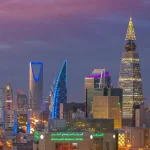MVRDV, in collaboration with JGE Architecture + Design, Copley Wolff, and Langan Engineering, has presented masterplan to Transform Faneuil Gardens – the public housing complex in Boston. The redevelopment is commissioned by The Community Builders and the Boston Housing Authority, meant to replace the outdated apartment complex from the 1940s with five modern buildings.
The new buildings will be mixed-income affordable housing with green spaces, artist live/work units, and a community hub at its heart. This redevelopment will not only ensure that all the existing residents have houses but also contribute to solving the housing shortage in Boston, adding 183 new income-restricted units, thus making the neighborhood more inclusive and stable.
Addressing Housing Shortages
Faneuil Gardens, originally built for WWII veterans, sits on 7.5 acres of land in the Brighton neighborhood, currently housing 600 residents from diverse cultural and generational backgrounds. It has stayed physically and socially apart from its surroundings by means of poor visibility and a public space that is not very inviting, while having a very active and engaged community. The new master plan will attempt to solve such issues by better connectivity and accessibility to the nearby McKinley Park and the Charles River, turning the complex into a pedestrian-friendly, inviting space for both residents and the greater Brighton community.
The resident-centered design approach ties in neatly with the overarching masterplan-inclusive, sustainable, and engaging. “The creation of a dynamic, well-connected community that seriously takes its residents’ health into consideration starts with listening to their needs and worries,” says MVRDV partner Frans de Witte. It will be centered on a pedestrian boulevard that will, in turn, link some of the major areas of the site and other activity nodes, such as art gardens, event spaces, and play areas-all helping drive a sense of belonging and community interaction at the project.
Enhancing Connectivity and Engagement
The renovation will also introduce environmentalist characteristics into the design, including flood-resilient landscaping and permeable surfaces to handle extreme rain events. Colorful façades of new buildings will draw their inspiration from the existing neighbourhood, therefore enhancing the visual relation to the immediate context.
According to MVRDV founding partner Nathalie de Vries, “This project is not only about building buildings, but it is about building relations and belongings that will flow down to future generations.” The first construction phase will be at the southwest corner of the site to minimize interference with the existing residents.





















Leave a comment